Some people might wonder whether succulents grow bigger, and they may conclude that they are not simply by observing the looks of them and assuming that succulent growth rate will increase whilst maintaining the same size.
It is important to know some details in depth about the succulent growth rate and to have a better idea on the same which will be very useful for you in general.
It is understood that the succulents which are for sale in the markets are small. That itself gives the impression to the community that they do not grow big.
When people spot a succulent plant, which is bigger than the usual size, they get a little confused since the impression on the size they have on succulent is somewhat different to what they witness there. Planters might have a doubt whether the succulents truly grow big or whether they remain to be small plants like they are renowned to be.
In fact, the reason for the change in the size would be the variety of the succulent.
Some varieties of plants would prefer to stay small whilst others prefer to grow bigger, and spread in a vast area which is completely different to the other.
In this scenario, succulent species play a big role and that will be the main factor for the size difference. Small succulents will grow up to 3-4 inches whilst the giant succulent plants could grow up to a height of 40 feet.
Nevertheless, it is understood that certain gardeners tend to grow the small succulents since they usually grow slowly. Giant succulents also carry the thick leaves, and they would love the dry weather conditions.
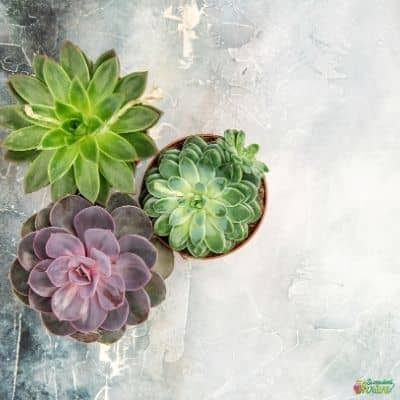
Fast growing succulents
Aloe Vera
Aloe Vera is usually grown with a short stem. Moreover, it will contain a collection of long slender leaves on the stem. As the time passes, this forms offsets which could fill the whole container. In this circumstance, take out those from the container.
Replant them in some other pots so that it will not be overcrowded. One special thing about Aloe Vera is its healing ability. This is used to cure the wounds and sun burns. Important thing to note about this is that they have sharp teeth on the edges of their leaves which could injure us.
Hence, be mindful when handling them. It is a plant which we cannot kill easily. We should place the Aloe Vera plant in a dryer place. That does not mean we have to place them under the scorching sun as if then, leaves could be burned.
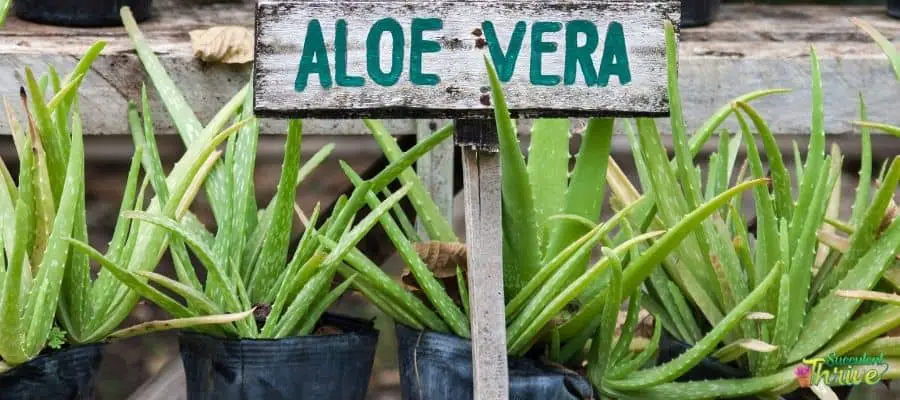
Kalanchoes Or Mother Of Thousands
This is native in Madagascar. It is a very popular plant among the succulents lovers as a fascinating indoor plant. They do not bloom often when they are grown indoors. This belongs to the family Crassulaceae and they are related to the Jade plant as well.
Having said that, once they are grown outside, they tend to bloom in small, lavender color flowers in late winter. After that mother plant will die and it will be replaced by tiny plants.
Hence, they are regarded as invasive. Lot of gardeners prefer to grow the mother of thousands of plants in containers because of this reason.
One more specialty regarding the mother of thousands plants is that, it won’t be able to produce seeds and instead they will be making plantlets. They will be mostly healthy too.
They could tolerate the drought conditions, having said that they will also love them being watered moderately. It will not expect a good draining pot. We could use commercial cactus soil mix for them.
If at all you are using a typical standard potting soil, you may add sand to sharper drainage. refrain in placing them under direct sunlight.
Crassula – Jade Plant – ( crassula ovata )
This is regarded as an endemic plant in South Africa. Their leaves will be glossy and green in color. They will grow up to one foot in height while it could rise to several feet high when grown outdoors.
For best results, you could use a terra cotta container to plant them. When Watering, ensure that the soil is completely dry before you water it again. Having said that , if you do not water them adequately, chances are that it could drop its leaves.
Hence, be vigilant and consistent at the same time when you are watering the jade succulents.
This generally contains small pink or white flowers. This is quite famous among the planters as a home-grown plant not only in these two countries but also among the other countries as well. This remains evergreen and contains thick branches as well.
A jade plants growth rate is predicted as approximately about 5-20 cm annually. However, this figure could vary depending on many elements as well. Giving the best conditions for their growth could make jade plants growth faster.
Echeveria
Echeveria belongs to the family crassulaceae and it is found in semi desert areas of central America , Mexico and northwestern south America. This is an elegant plant which blooms with colorful flowers too.
In addition to that this is quite famous for its rosette leaf formation. Echeverias will grow well despite whether they have been fertilized or not. Nevertheless, if you are too anxious and wish for better and faster results fertilizing them would be very effective.
Furthermore, these types of succulents will prefer a soil type which has a good drainage system along with enough room so that the roots of this plant could expand as they wish. Watering them on a constant basis could also help them to grow well.
Echeveria is well known as a fast-growing succulent. If we elaborate more on that, a 2 inches plant could grow up to 6-8 inches within a year
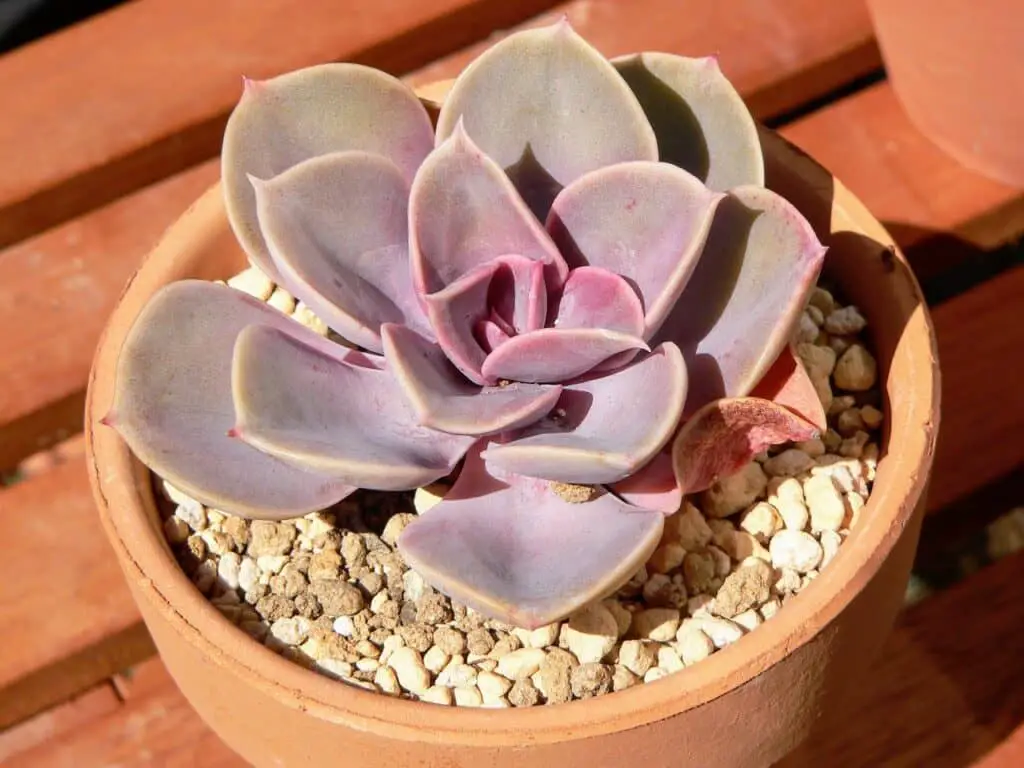
Sedum Or Stonecrop
This is called by the common names of ice plant, orpine etc. and inherited by family Crassulaceae. . This comes very handy for an indoor garden collection, as it is very attractive in its looks. Additionally, they will grow with minimum care treatments too.
This would like well-draining soil for their better performance. When they get matured, they will be 6-24 inches in height and 12-24 in width. They will thrive in full sunlight too. This contains thick succulent leaves and will have clusters of flowers which will be star shaped.
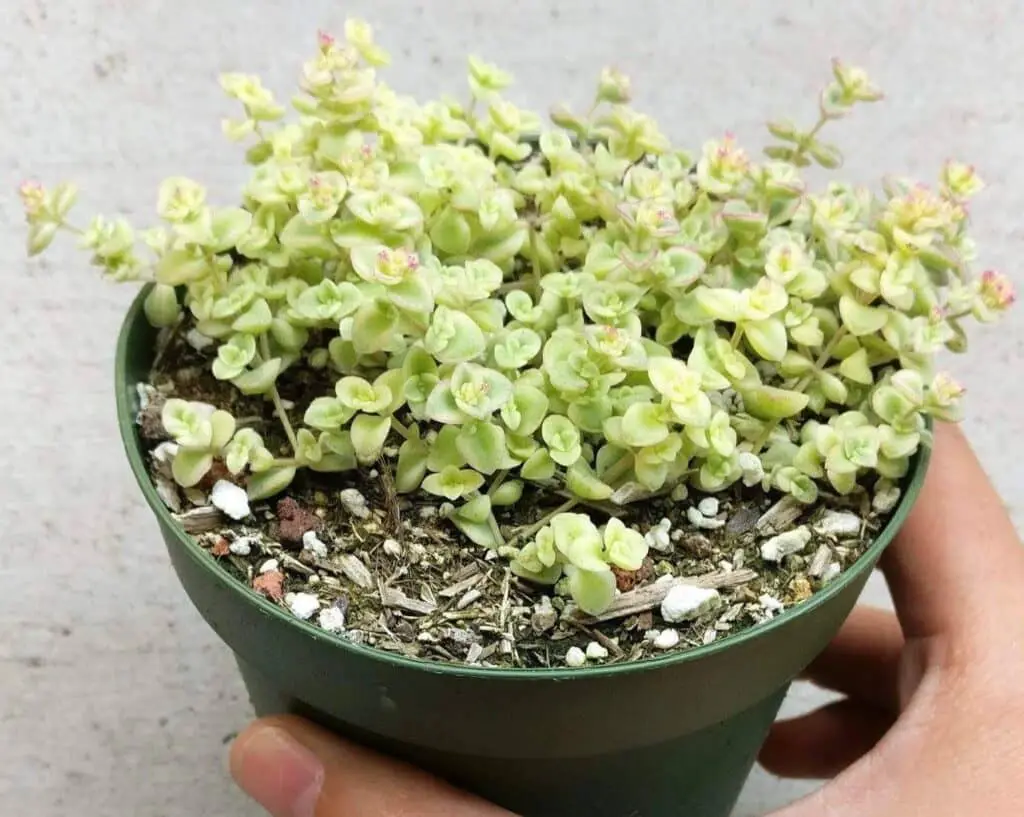
Graptoveria
This is a hybrid cross which is formed through combining Echeveria and Graptopetalum. Compact rosette about 6-8 inches emerges from many of them. There could be some like Moonglow which could even get 10 inches wide too.
They form offsets faster. They reflect in vivid colors when the plant is in stress. Their flowers are usually spotted in yellow with a pink touch and they are star shaped. Leaves will have an olive-green shade along with a bronze sheen.
This will grow well in full sun to partial sun. watering should be done as appropriate. They are very useful plants since they purify the air in your home.
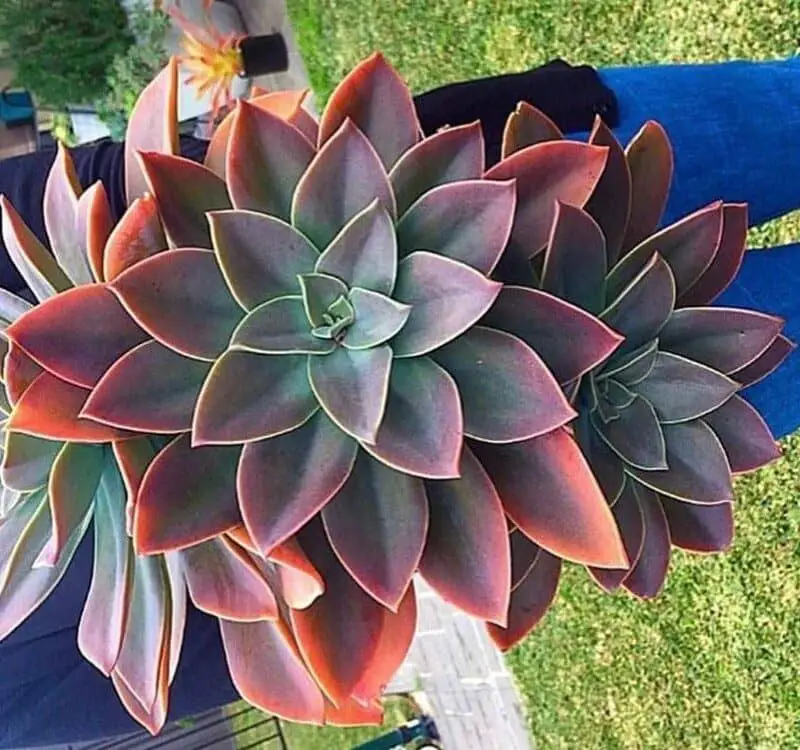
Graptosedum
This is called as California Sunset Succulent, Alpenglow Succulent, Vera Higgins Succulents commonly. This belongs to the family crassulaceae. This is a hybrid version of Graptopetalum and Sedum .
This could grow up to 6-12″ high and could be 6-9″ in width. This will prefer full sun to partial sun. Well draining soil along with a proper watering process will be healthy for this plant’s growth.
They will look great as ground plants as well as hanging plants. You could see flowers in white during spring.
Bunny Ear Or Opuntia Microdasys
This is native to Mexico. This is a very fascinating type of cactus. It is bushy and could be oval to round. It could consist of a small pad which will be up to 15 cm across. Pads will form in a pai which reflects the ears of a rabbit.
They will be velvet green in color once they mature. They produce red or yellow flowers which are in a bowl shape in Spring or in summer. Finally flowers will convert to purple to red color fruits. This is a very interesting plant as it beautifies your home garden throughout the year.
They could be 3-4 feet in height and 4-5 feet in width. They will prefer full sun to partial sun. Best recommended to provide them with well-draining soil with occasional watering as appropriate.

Slow growing succulents
Haworthia
This could be commonly spotted in garden centers and it is renowned as a slow growing succulent plant. This is native in southern Africa. You could place them near a window where it will get bright indirect sunlight for several hours daily.
Just like with the other succulents, wait until the soil gets completely dried enough after one watering session and before you start with another watering session. This will come handy for a terrarium as well.
This will be about 5 inches in height when it gets matured. It will remain small. Hence you could plant this along with other Succulents. They tend to grow in small clusters. You can grow them in shallow dishes as well. Later, clusters will become matured and then mother plants will form small plants.
Gasteria
This is an endemic plant in South Africa. It is called by the common names such as Gasteria, ox tongue, cow’s tongue, lawyer’s tongue. This is a perennial succulent. Once it matured it could be 4-24 feet in size. They prefer full sun to partial shade.
They would also like a well draining soil mix along with proper watering. it produce tubular, curved red or pink flowers in winter to spring times. Certain Gasteria succulent types leaves form with attractive patterns and they could be seen in fascinating colors too.
Cactus
They are flat and do not usually come with sharp spines. One feet would be the maximum length that it could get. it is called crab claw cactus in general as well. That is because once they drape over, it looks more like a crab claw.
This is a plant which would appreciate a bit of moisture. Hence watering should be done appropriately. Please wait until the first layer of the soil gets completely withered. Before watering. You may place this plant closer to a window so that it will be pleased.
During wintertime, you could see them blossoming. They will be more like in yellow color. They grow relatively slow. it will take six-twelve months to get to the size of larger marble. Further it will take two to three years to grow 1-2 cm high.
This will again be based on the variety too. Afterwards, they tend to grow from 1-3 cm high every year. Having said that there could be few exceptions which can grow up to 15 cm or more per year too.
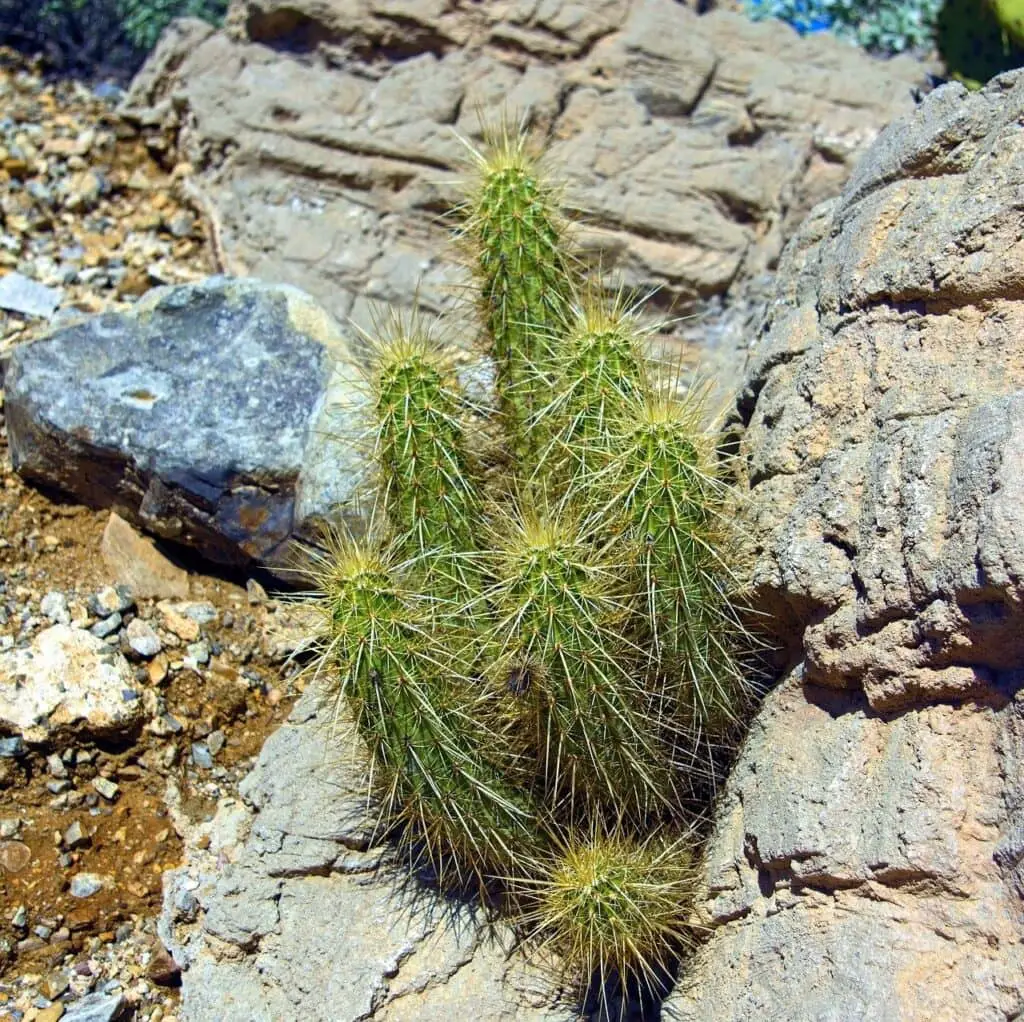
Agave
Century plant is the common name of Agave and it is found native in Hot, arid regions of the Americas. These succulents carry large leaves along with spiny tips at the edge. There are many types of Agave of which the sizes could vary from one another depending on its varieties.
They produce flowers in green, white and in yellow color. It bloom only once in their lifetime once they get matured. They will be in bell shape. It could take several years to several decades for the plant to get matured. They would also love well draining soil mix.
We need to provide them full sunlight for their better growth. Their average height would be 1-20 feet and average width would be 1-10 feet once it is matured.
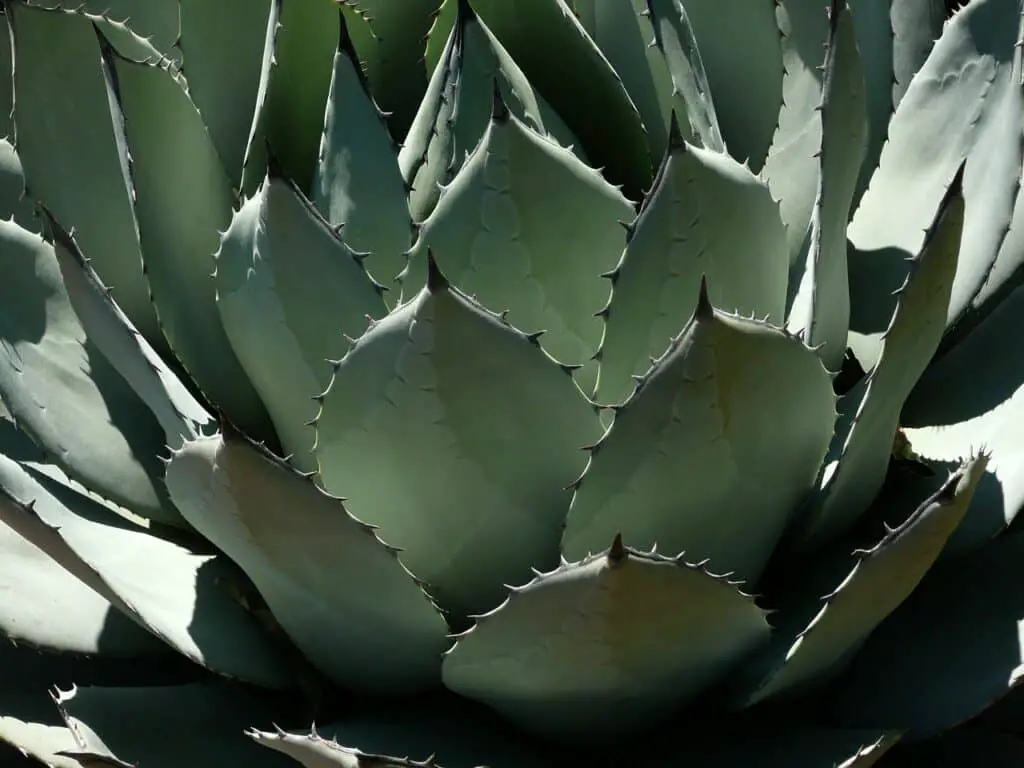
Succulent dormancy
Dormancy is a duration when a succulent is slowing down its growth as well as its physical activities on a temporary basis. When a plant is going through a dormancy it will try to save its energy until they get their required environmental conditions right.
When we talk about succulents in general, we can elaborate them on two categories which are called winter dormant and summer dormant plants.
Season will be important for a succulents growth rate. It will grow nicely in its growing season whereas it will be quite slow in its dormant season. There are certain succulents which do not grow at all during the dormant season.
During dormancy, succulent will be in survival mode. Since the growth is obstructed during a succulent dormancy, it will not consume a lot of water. It would like to be in sleepy mode. Hence, you don’t have to water the succulents during their dormant season.
Succulent Winter Dormancy
If we take summer growers into consideration, they are the plants which grow well during the months from May to August and go dormant during winter. Hence it is called winter dormancy.
During winter dormancy, you are not supposed to repot them. It is important to know. Similarly a different type of care should be given for them whilst they are in their dormancy. When a succulent is in winter dormancy, it will tend to drop its leaves. Chances area that they could completely die above ground and they will sprout again in spring.
Moreover, you should be vigilant with wearing these succulents when they are in their winter dormancy period.
Examples for winter dormant plants are as follows,
- Adenium ,
- Agave,
- Aloinopsis,
- Echeveria,
- Euphorbia etc.
Succulent Summer Dormancy
Generally, Succulent which are summer dormant like cooler temperatures for their well growth. They tend to grow well during the fall, winter and in spring as well. Having said that, chances are that they could go mini dormant during extreme cooler temperatures.
This could happen usually in months like December, January. Be vigilant! If you are growing these summer dormant succulents, you must be very cautious with the intense heat. Do not expose them for those heated conditions. Refrain in watering too much during summer too.
Temperatures below about 60°F at night would be the best for them to grow better. It could be slightly heated during the daytime.
Examples for Summer dormant plants are as follows,
- Adromischus,
- Aloe,
- Aeonium,
- Crassula,
- Haworthia etc.
Factors affecting growth rate of succulents
Succulent plant growth rate will mainly be based on the succulent variety and on the growing conditions as well. Succulents also has its numerous varieties of which some are slow growing whilst others are fast growing comparatively to others.
The changes in the growth could also be spotted in different ways where some plants will show quite evident changes and on the other hand some plants will not show their changes at all and they will not be visible.
Depending on the varieties of the succulents they tend to show a significant growth in one year. For example, Graptoveria, Aloe, Sedum, and Kalanchoe.
Besides that, there are varieties which are renowned for slow growing like Haworthia, Gasteria etc. It will be difficult for you to notice their growth as it is very hard to identify.
Moreover , if we take another succulent like Saguaro cactus , it will take about 10 years to grow one inch. It will take more than 70 years for blossoming.
By that time, they will be only six to seven feet high. Do not be surprised, they will take about 200 years to achieve their maximum height. So you need to improve on your patience if you want to plant slow growing plants.
Most importantly, the environmental conditions will also affect for a succulent growth. Environmental conditions are such as sunlight, temperature, soil and humidity. These plants will grow vigorously if they are given the right level of sunlight, temperature, soil type etc., and they will flourish very gracefully.
It will take less than a year for these plants to get to 4 inches from 2 inches. If they spread out over a larger area one 2 inch plant is possible to cover 6-9 inches around it within a period of one year.
If we take Crassula as an example it is recognized as a plant which grows slowly and faster too. These plants will show a rapid growth outdoors.
How to increase succulent growth
It is not a secret that succulents take a longer period to grow to their mature size and the planter needs to have a little more patience until the plant becomes matured. This applies for the giant succulent as well.
At the same time, succulents do not require consistent care and so much attention. This does not mean that we should give them minimal attention or care. Hence, it is recommended to provide these plants with the best conditions for their faster growth.
We should not leave them in an unhealthy environment for their growth even though they can adapt and stay alive in those conditions. We could try a few steps if we want to stimulate the growth rate of succulents.
Light
Sunlight is very essential for the succulent growth. Majority of the succulents will enjoy indirect bright sunlight whilst on the other hand there could be succulents which would like to have shade partially.
Having said that, if the planter cannot provide these conditions , he could arrange this artificially. We could use a fluorescent or LED light of around 60 watt with a timer. it is advised to use 10-14 hours per day keeping it at a distance of 1.5 feet away.
Watering
First thing that comes to our minds when it comes to watering is that you must water the succulents only if its soil is completely dried enough. To reiterate do not ever water the succulents if its soil is not completely dried enough.
It is mandatory and something you should never forget! let them dry before you conduct another watering session. In case you leave your succulents with moist, you will most probably end up with losing the plant. The repercussion is such that it will lead to root rot.
If they are in their growing season , you need to be more aggressive than other seasons when watering them during these times. Refrain in watering during their dormant season. Water as appropriate as if not both under watering and over watering could affect badly for succulents growth.
Humidity
Succulents would prefer a less humid atmosphere. It has to be ideally 80 % – 100 % humid. Having said that this could vary from one plant to another too.
Temperature
This factor could also affect succulent’s growth. Since many of the succulents are adapted to warm conditions, we should ensure that they are protected from cold temperatures.
We must protect the succulents specially from frost. If we take necessary steps in protecting them during cold temperatures , we could stop the plant’s growth getting affected from this.
Soil
At the same time, providing them with the fresh soil will also stimulate the growth rate as the plants will get enough nutrients then. Succulents will get another fresh start from getting these requirements. The usual period for reporting is 1-3 years.
You must ensure that you do not water these plants two weeks before repotting. Further it is better to refrain from watering them after two weeks as well once they are repotted. In addition to this, it is vital to take off the offsets as well since it will cause the mother plant to grow slowly. People tend to plant the offsets separately which could form new plants for them.
Furthermore, it is important that you do not overcrowd these plants. You must take necessary actions when it is required. Using accurate types of soil along with providing good ventilation will also be quite beneficial for their growth.
Soil type used for this process should also be a well-drained one. Encouraging root growth is very essential since that is what protects the plant’s survival. It carries the required nutrients as well as the water.
Pot
it is important to grow them in a shallow pot unless the roots will get rotten due to the water being stored at the bottom. Hence, it is important to be vigilant on this fact as well.
Does propagation method affect the growth rate of succulents?
Leaf propagation : If we take Leaf propagation, the roost will appear to come by 2 weeks whereas it will take four more weeks for the new leaves to show up and only then they could be transplanted into small pots depending on the growers wish. This mainly fits for succulents which have fleshy leaves. For example, plants like Echeveria, Jade plants etc will do great with this option.
Stem propagation: the duration would be roughly around 4 weeks to have roots and chances are that it will take sometimes more than that too. This will be better for succulents which have prominent stems. For example, stacked crassulas, sedums etc.
Which one grows faster: outdoor or indoor succulents?
Succulents are famous as great houseplants. They have become very trendy among the gardeners as they do well indoors. Having said that, many of the succulents will grow faster if they are grown outdoors.
The main reason for this is, they require sufficient sunlight. If they are grown indoors, chances are that they could lack sunlight. That will impact badly for the succulent’s growth rate. It could vary from one to another as different people will have different weather conditions too. In that case, growing them indoors would be a better option.
A little note to keep in mind – Green succulents will do better indoors whilst succulents in other colors such as orange, purple will do better outside.
How long do succulents take to grow
Leaf propagation, stem propagation through offset and seed propagation are some ways of growing succulents. If we take Leaf propagation, the roost will appear to come by 2 weeks whereas it will take four more weeks for the new leaves to show up and only then they could be transplanted into small pots depending on the growers wish.
In stem propagation, the duration would be roughly around 4 weeks to have roots and chances are that it will take sometimes more than that too.
On the other hand, if someone is growing through propagation through an offset method , planter will have to wait for about 4-10 weeks to witness the roots after the pups have calloused over.
Finally, if we consider the seed propagation method, this will be the one which will take the longest time to form the roots. It could be from 3 weeks and go up to even one year for the germination. Not only that , but also it will consume a plenty of time to flourish those seeds to become grown plants as well.
How tall can succulent grow
Consider that your succulent lacks sufficient sunlight, then they will grow taller and stretch out. This could be frequently spotted among indoor grown succulents. You call this activity Etiolation technically.
The very first indication they give before they grow taller is, first they will turn to the direction where it could get sunlight and later it will bend towards that direction. It kind of looks like someone is trying to bend towards a certain direction to grab something. Whilst this happens, it will grow taller. There could be more space between the leaves after this condition arises.
To overcome this issue, you may use a grow light or try to move it to another place where it could absorb sunlight properly.
How to tell if your succulent is growing
If you could spot healthy roots, succulent is growing well. Watering should be done as appropriate to make the succulents happy so that they can grow well. If there are any issues with watering as well as on draining, roots rots could take place and then growing would be obstructed.
Firmness is another feature from which we could guess the succulent is growing. This literally means watering has been done as per the standard process and it has stored water in the cells of the plant.
Further if you could see a face lift of the plant, that also means the plant is well hydrated. It will make all the wrinkles vanish. Then we can think , the plant is healthy and well growing.
Color is another factor from which we could decide that it is well growing. If you don’t spot any color changes , or any brown patches on the plant , you could assume that the plant is well growing.
How fast does donkey tail succulents grow
This comes very handy if we are looking to grow a plant as a hanging plant in a cute container. This is a slow growing succulent. It is a trailing succulent of which the stem could rise to 3 to 4 feet. However, that will take about 6 years of time. It has gray green leaves. Blossoming of Donkey Tail could be spotted very rarely, chances are that you could see them with red flowers in summertime.
This is an endemic plant in Mexico. We need to provide them the bright sunlight so that they can grow well. When it comes to watering, make sure you wait until soil gets dried enough completely before you water them again.
You could plant and propagate this type of succulent all year round if it’s planted indoors. On the other hand , if it’s grown outdoors, best to plant it in early Spring.
